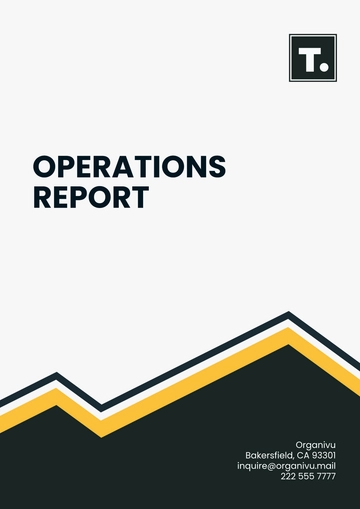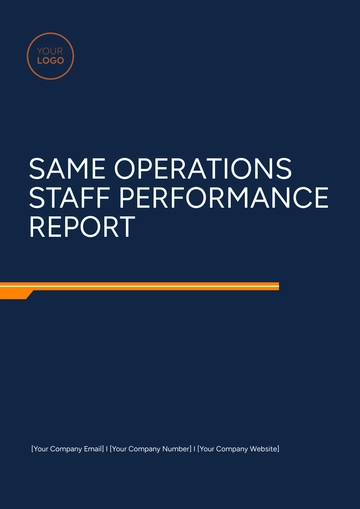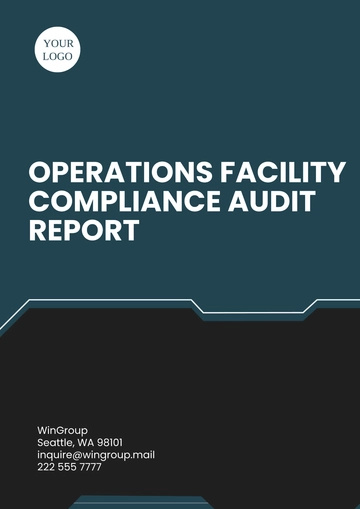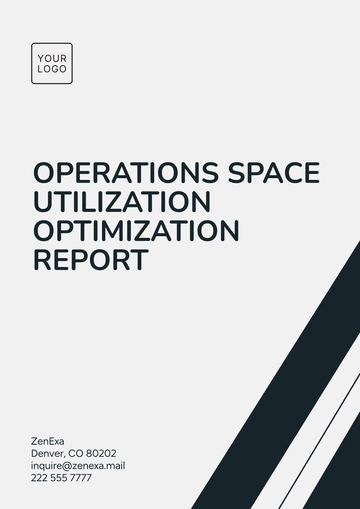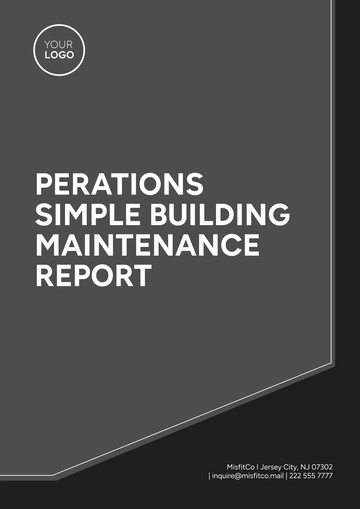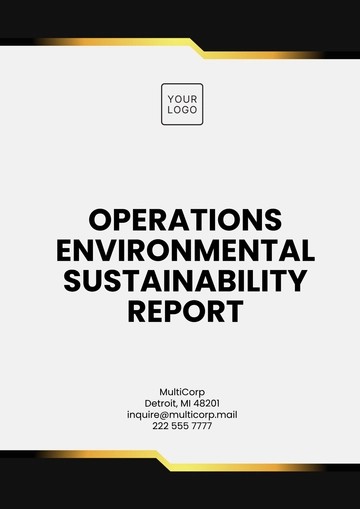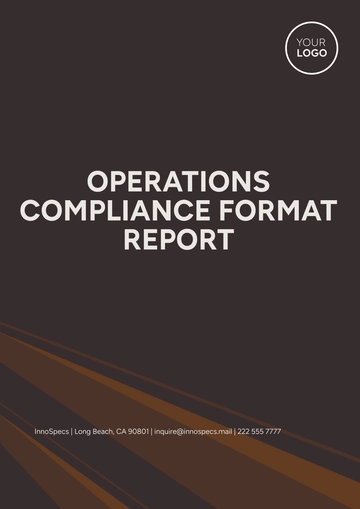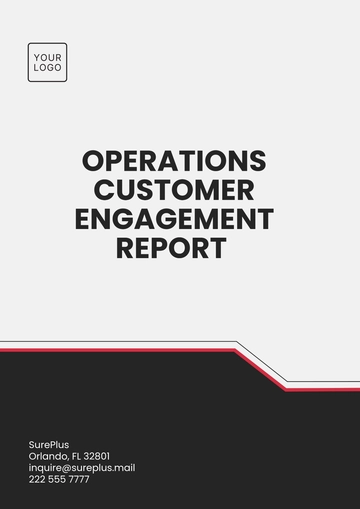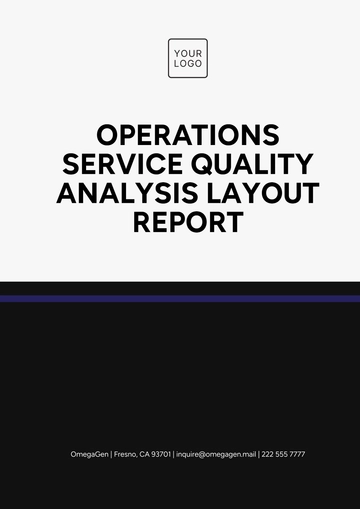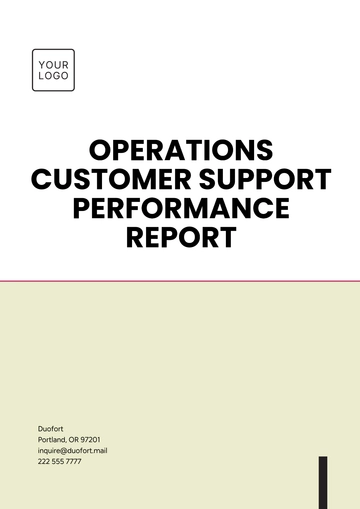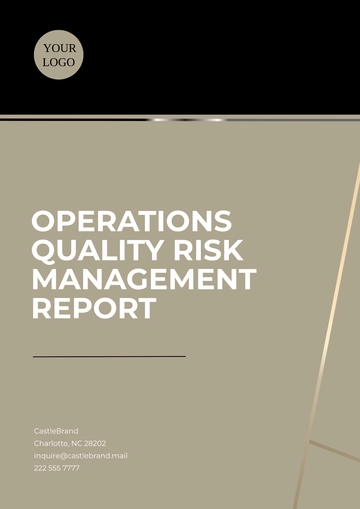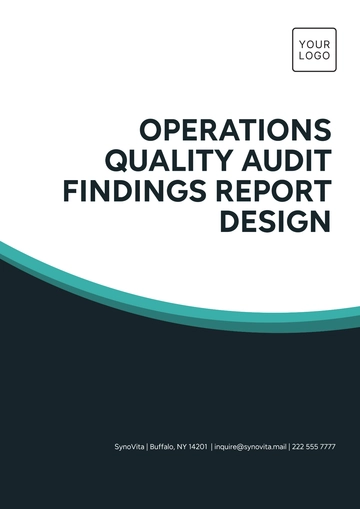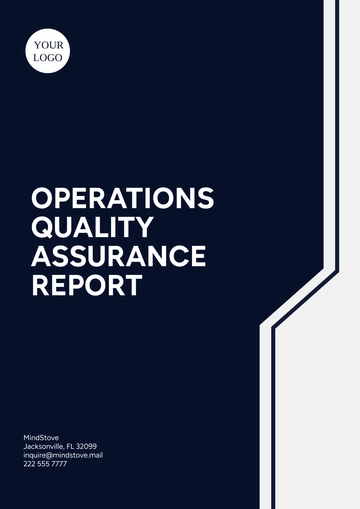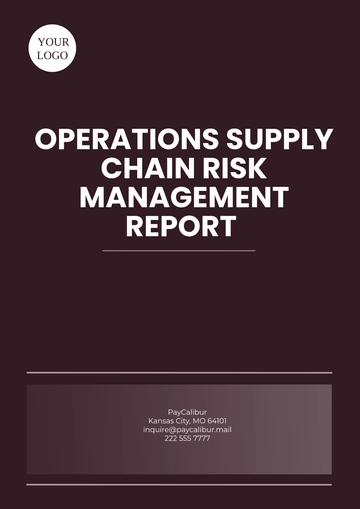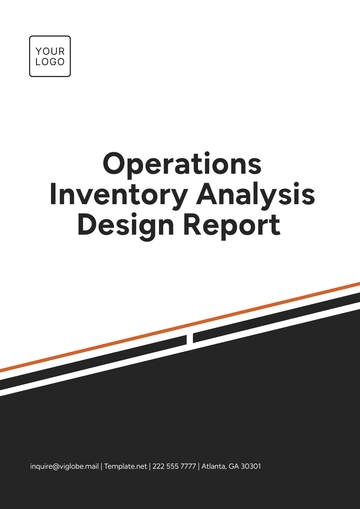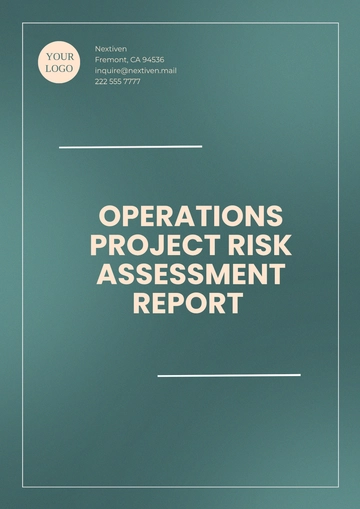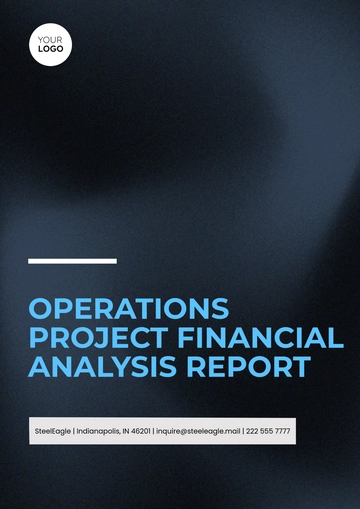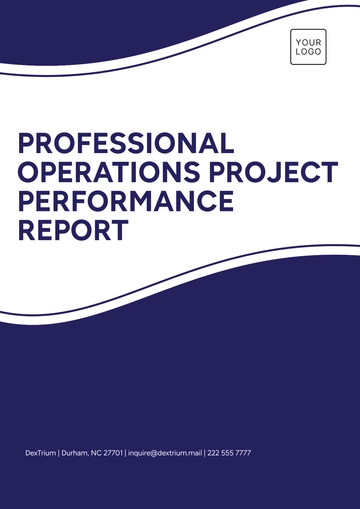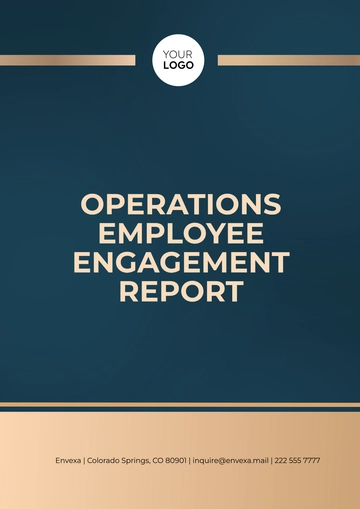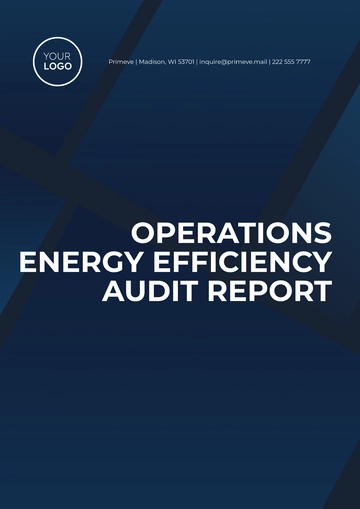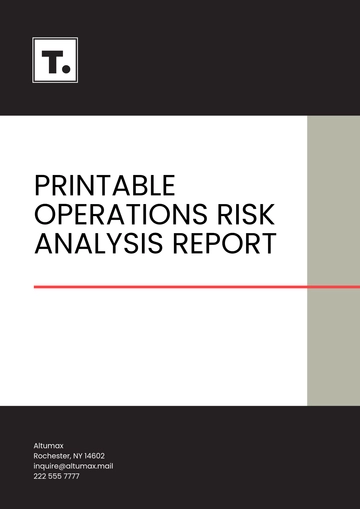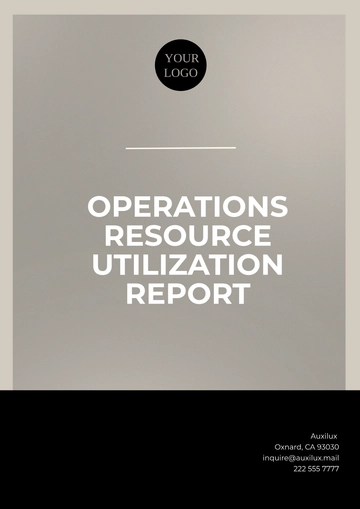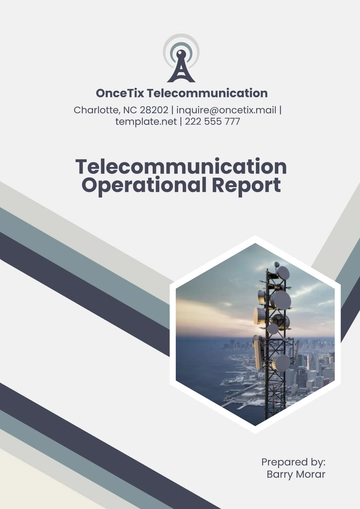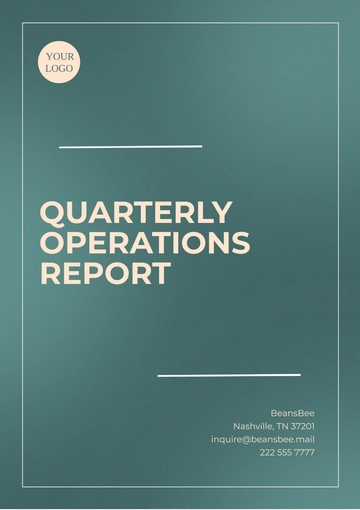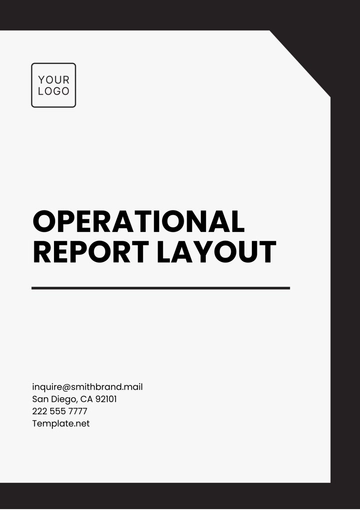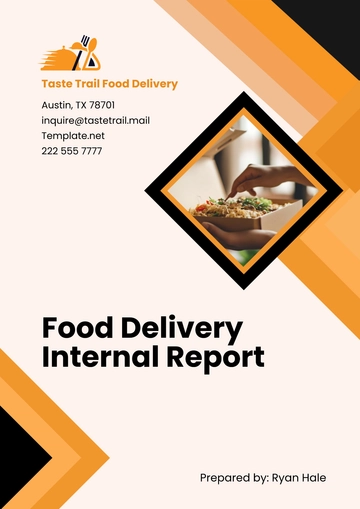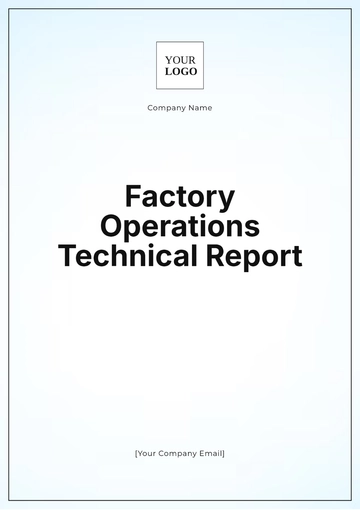Free Movie Theater Operational Efficiency Report
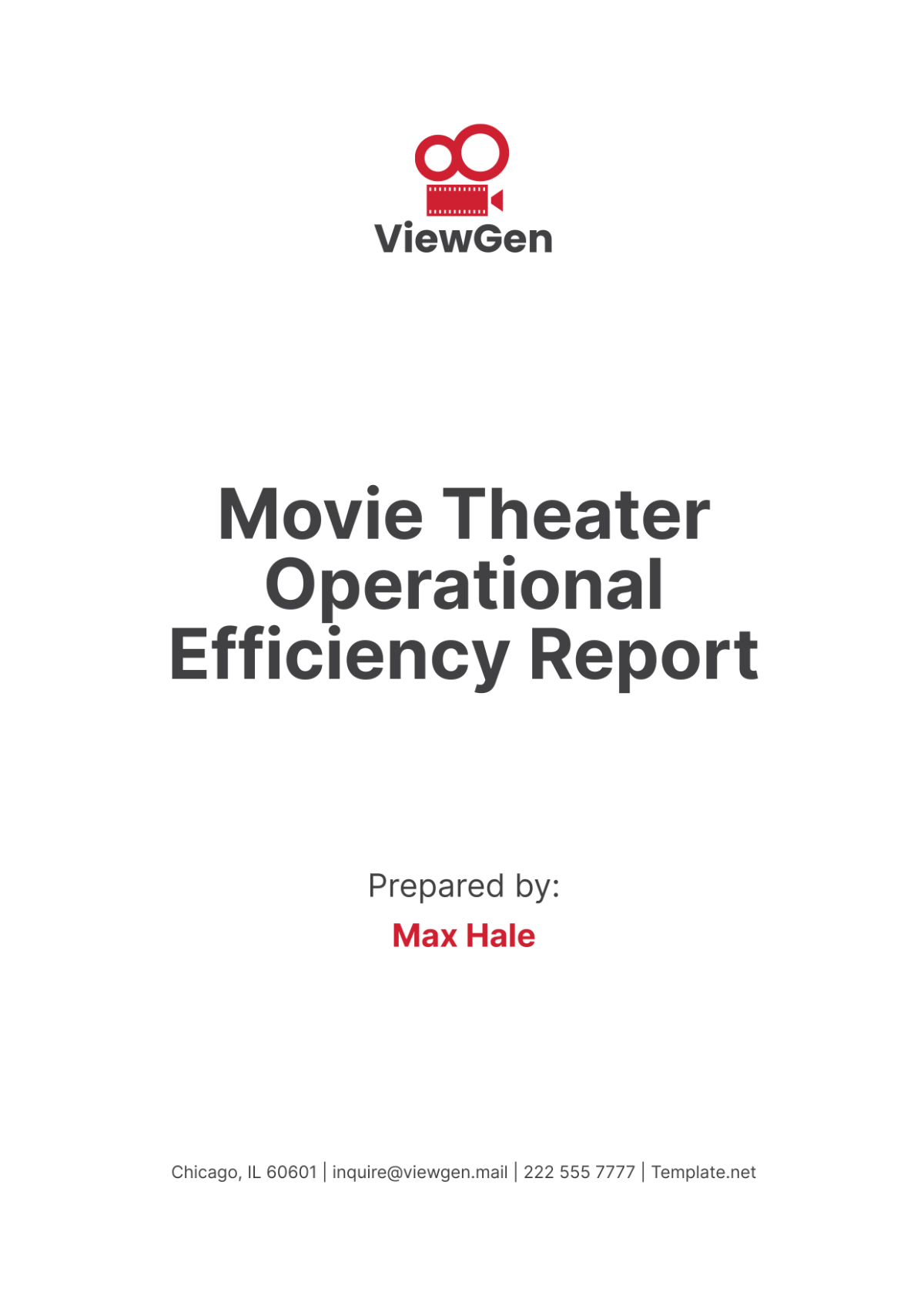
I. Executive Summary
In recent years, [Your Company Name] has undertaken significant initiatives to optimize the operational efficiency of its movie theater chain. This report provides a detailed analysis of the key strategies implemented, their impact on performance metrics, and recommendations for continuous improvement. Through a combination of advanced technology integration, staff training programs, and enhanced customer service protocols, [Your Company Name] has successfully reduced operational costs, increased customer satisfaction, and boosted overall profitability. Our focus on data-driven decision-making and lean management principles has enabled us to streamline operations, minimize waste, and maximize resource utilization.
The findings in this report highlight the critical areas where [Your Company Name] has excelled, such as ticketing and concession sales automation, energy-efficient facility upgrades, and strategic scheduling of showtimes. Additionally, we have addressed challenges and identified opportunities for further enhancements, particularly in the areas of digital marketing, customer loyalty programs, and maintenance scheduling. By continuing to leverage innovative solutions and maintaining a customer-centric approach, [Your Company Name] is well-positioned to sustain and improve its competitive edge in the movie theater industry. This report serves as a roadmap for ongoing operational excellence and a testament to our commitment to providing an exceptional cinematic experience for our patrons.
II. Introduction
The purpose of this report is to analyze the current operational procedures of [Your Company Name]'s movie theater and to identify areas where efficiency can be improved. By examining key operational aspects such as staffing, ticketing, concession management, maintenance, and customer satisfaction, this report aims to provide actionable insights and recommendations for enhancing overall performance and profitability. Understanding and optimizing these areas are crucial for maintaining a competitive edge in the rapidly evolving entertainment industry.
Staffing efficiency plays a vital role in the smooth functioning of a movie theater. This report will evaluate current staffing levels, shift schedules, and employee productivity to identify potential improvements. Ticketing processes, both online and on-site, will be scrutinized to ensure they are user-friendly, quick, and capable of handling peak times effectively. The management of concessions, a significant revenue stream, will also be assessed for operational bottlenecks and inventory control issues that could be hindering profitability.
Maintenance of theater facilities, including seating, sound systems, and projectors, is essential for providing a high-quality viewing experience. This report will investigate the current maintenance practices and suggest ways to streamline these processes. Finally, customer satisfaction, which is paramount to the success of any service-oriented business, will be examined through feedback mechanisms and service quality assessments. By addressing these critical areas, [Your Company Name] aims to enhance its operational efficiency, thereby improving the overall experience for its patrons and achieving better financial outcomes.
III. Staffing Efficiency
Effective staffing is crucial to the smooth operation of [Your Company Name]'s movie theaters. This section explores our current staffing strategy and identifies areas for improvement. We will delve into scheduling optimization, training and cross-training practices, employee morale, and the integration of technology. By addressing these factors, we aim to enhance operational efficiency, ensuring a well-managed workforce that contributes to a superior customer experience.
A. Current Staffing Strategy
At [Your Company Name], our current staffing strategy involves a mix of full-time and part-time employees scheduled based on anticipated demand and historical data. We allocate more staff during peak times, such as weekends and holidays, to handle increased customer volume. Despite this, our analysis reveals opportunities for refining our approach to better match staffing levels with customer traffic and operational needs.
B. Scheduling Optimization
One key area for improvement is scheduling. Currently, our scheduling relies heavily on historical data, which may not fully account for sudden changes in customer flow. Implementing predictive analytics can enhance our ability to forecast demand more accurately. By integrating real-time data and using dynamic scheduling systems, we can adjust staffing levels proactively, reducing instances of overstaffing or understaffing. This approach ensures that we have the right number of employees available during peak periods and can scale down during quieter times.
C. Training and Cross-Training
Effective training and cross-training are essential for maximizing staffing efficiency. Employees who are trained in multiple roles—such as ticketing, concessions, and ushering—can cover various functions as needed, reducing downtime and increasing operational flexibility. Regular training sessions will ensure that all staff members are up-to-date with the latest procedures and service standards. Additionally, cross-training helps mitigate the impact of absenteeism and turnover, allowing us to maintain service levels without disruption.
D. Employee Morale and Retention
Staff morale and retention are crucial factors in maintaining a productive workforce. Engaged and satisfied employees are more likely to provide excellent customer service and stay with the company long-term. [Your Company Name] should focus on creating a positive work environment through employee recognition programs, competitive wages, and career development opportunities. Offering incentives for outstanding performance and providing clear paths for advancement can boost motivation and reduce turnover rates.
E. Technology Integration
Integrating technology into our staffing practices offers significant potential for improving operational efficiency. By leveraging modern tools and systems, [Your Company Name] can streamline processes, optimize staff allocation, and enhance the overall customer experience. Below are key technological advancements that can support our goals:
Advanced Scheduling Software: Automates the scheduling process by analyzing employee availability and operational needs. This ensures optimal shift coverage and reduces the risk of overstaffing or understaffing.
Self-Service Kiosks: Allows customers to purchase tickets and concessions independently, decreasing wait times and alleviating pressure on front-line staff.
Mobile Ticketing Options: Facilitates ticket purchases and check-ins via smartphones, streamlining the customer entry process and reducing lines at the box office.
Automated Inventory Management: Monitors concession stock levels in real-time, helping to prevent shortages and manage inventory more efficiently.
Employee Management Systems: Tracks employee performance, attendance, and productivity, providing valuable data to improve staffing decisions and identify areas for additional training.
By addressing these aspects—scheduling optimization, training, employee morale, and technology integration—[Your Company Name] can enhance staffing efficiency, ultimately leading to better operational performance and increased customer satisfaction.
IV. Ticketing System Efficiency
Understanding the effectiveness of our ticketing system is crucial for enhancing customer experience and operational efficiency. This section examines the current ticketing process, including both online and in-person sales, and identifies existing issues. The following table provides a detailed overview of the current state and challenges of each aspect of our ticketing system:
Aspect | Current State | Issues |
|---|---|---|
Online Ticketing | Available | Website occasionally crashes |
In-Person Ticketing | Manned counters | Long queues during peak times |
Ticket Scanning | Automated scanners | Frequent malfunctions |
B. Technological Integrations
To address the identified issues and improve overall efficiency, the integration of advanced technologies is recommended. The following list outlines key technological solutions that can enhance our ticketing system:
QR Code Scanning: Speeds up entry and reduces scanning errors.
Mobile App Integration: Allows for seamless ticket purchase and management via smartphones.
Self-Service Kiosks: Provides additional ticketing options, reducing wait times and relieving congestion at counters.
These technological enhancements aim to streamline the ticketing process, reduce operational issues, and improve customer satisfaction.
V. Concession Management Efficiency
Effective concession management is crucial for optimizing revenue and improving customer satisfaction at [Your Company Name]’s movie theaters. The following table outlines current practices, issues, and recommended technological integrations for enhancing concession management efficiency.
Aspect | Current State | Issues | Recommendations |
|---|---|---|---|
Inventory Management | Manual tracking with periodic audits | Inaccurate stock levels, overstocking, and stockouts | Upgrade to automated inventory management systems |
Staffing and Training | Part-time employees with basic training | Inconsistent service quality and slower transaction times | Implement advanced training programs for staff |
Implement advanced training programs for staff | Legacy POS systems used for transactions | Slow processing, frequent issues, limited integration | Invest in advanced POS systems with integrated features |
Automated Inventory Management | Real-time tracking and analytics | - | Reduces discrepancies, prevents overstocking and stockouts |
Advanced POS Systems | Modern POS with integrated payment and inventory | - | Speeds up transactions, reduces errors, improves data |
VI. Maintenance & Upkeep
Effective maintenance and upkeep are fundamental to ensuring a safe, clean, and enjoyable environment for guests at [Your Company Name] movie theaters. Regular and systematic maintenance practices not only preserve the facility's aesthetic appeal but also contribute to operational efficiency and customer satisfaction. Ensuring that all equipment, systems, and facilities are well-maintained helps prevent disruptions, extend the lifespan of assets, and uphold safety standards.
The following table provides a detailed overview of the current maintenance practices, identifies common issues encountered, and outlines recommendations for enhancing maintenance and upkeep processes. By addressing these areas, [Your Company Name] can achieve a higher standard of facility management and improve the overall theater experience for patrons.
Aspect | Current State | Issues | Recommendations |
|---|---|---|---|
Facility Maintenance | General Cleaning | Daily cleaning routines in place | Inconsistent thoroughness, especially in high-traffic areas |
Repairs and Upgrades | Ad-hoc repairs conducted | Delayed repairs and occasional equipment failures | |
Equipment Maintenance | HVAC Systems | Regular maintenance performed | Occasional malfunctions affecting comfort |
Projection and Sound Systems | Routine checks conducted | Inconsistent performance and occasional technical issues | |
Safety and Compliance | Emergency Systems | Monthly checks of alarms and exits | Some systems lack regular testing |
Facility Safety Inspections | Annual inspections conducted | Outdated safety measures and occasional non-compliance |
The table highlights the current state of maintenance practices, identifies key issues, and provides targeted recommendations to enhance the upkeep of [Your Company Name]’s facilities. Implementing these recommendations will improve operational efficiency, enhance safety, and elevate the overall guest experience.
VII. Customer Satisfaction
Customer satisfaction is a critical measure of success for [Your Company Name] movie theaters. Maintaining high levels of satisfaction not only fosters repeat business but also encourages positive word-of-mouth, which can significantly enhance the theater's reputation. To effectively gauge and improve customer satisfaction, it is essential to assess various aspects of the movie-going experience, including service quality, amenities, and overall ambiance.
The following table presents an overview of current customer satisfaction metrics, identifies common areas of concern, and offers recommendations for improvement. By addressing these factors, [Your Company Name] can enhance the overall movie-going experience and strengthen customer loyalty.
Aspect | Current State | Issues | Recommendations |
|---|---|---|---|
Service Quality | Customer Feedback | Feedback collected via surveys and social media | Mixed reviews on service speed and staff interactions |
Response Time to Complaints | Complaints addressed within 48 hours | Some delays in addressing and resolving issues | |
Amenities | Theater Comfort | Comfortable seating and clean facilities | Occasional issues with seating cleanliness |
Concession Quality | Snacks and beverages available | Inconsistent product quality and limited options | |
Overall Ambiance | Theater Environment | Modern and well-maintained | Some reports of noise and temperature issues |
Ease of Access | Convenient location with ample parking | Parking congestion during peak times |
VIII. Conclusion
The operational efficiency analysis of [Your Company Name] has pinpointed several critical areas requiring attention and improvement. From staffing and ticketing processes to concession management and maintenance, each aspect of theater operations has been scrutinized to identify opportunities for enhancement. The recommendations provided aim to address inefficiencies, streamline processes, and elevate the overall customer experience. By adopting advanced technologies, refining operational procedures, and investing in staff training, [Your Company Name] can significantly improve performance across various facets of the business.
Implementing these strategic recommendations is expected to yield substantial benefits, including increased customer satisfaction, optimized operational workflows, and enhanced profitability. By focusing on these improvements, [Your Company Name] will not only create a more enjoyable and efficient environment for patrons but also strengthen its competitive position in the market. The path forward involves a commitment to continuous improvement and a proactive approach to addressing operational challenges, ensuring long-term success and growth for the theater.
Contact Information
For further information or any inquiries regarding this report, please contact [Name], [Position], at [Your Company Email] or [Your Company Number].
- 100% Customizable, free editor
- Access 1 Million+ Templates, photo’s & graphics
- Download or share as a template
- Click and replace photos, graphics, text, backgrounds
- Resize, crop, AI write & more
- Access advanced editor
Enhance operational efficiency with the Movie Theater Operational Efficiency Report Template from Template.net. This editable and customizable template helps streamline performance assessments. Easily editable in our Ai Editor Tool, it allows you to adjust every detail to reflect your theater’s unique operational metrics and improvements.
You may also like
- Sales Report
- Daily Report
- Project Report
- Business Report
- Weekly Report
- Incident Report
- Annual Report
- Report Layout
- Report Design
- Progress Report
- Marketing Report
- Company Report
- Monthly Report
- Audit Report
- Status Report
- School Report
- Reports Hr
- Management Report
- Project Status Report
- Handover Report
- Health And Safety Report
- Restaurant Report
- Construction Report
- Research Report
- Evaluation Report
- Investigation Report
- Employee Report
- Advertising Report
- Weekly Status Report
- Project Management Report
- Finance Report
- Service Report
- Technical Report
- Meeting Report
- Quarterly Report
- Inspection Report
- Medical Report
- Test Report
- Summary Report
- Inventory Report
- Valuation Report
- Operations Report
- Payroll Report
- Training Report
- Job Report
- Case Report
- Performance Report
- Board Report
- Internal Audit Report
- Student Report
- Monthly Management Report
- Small Business Report
- Accident Report
- Call Center Report
- Activity Report
- IT and Software Report
- Internship Report
- Visit Report
- Product Report
- Book Report
- Property Report
- Recruitment Report
- University Report
- Event Report
- SEO Report
- Conference Report
- Narrative Report
- Nursing Home Report
- Preschool Report
- Call Report
- Customer Report
- Employee Incident Report
- Accomplishment Report
- Social Media Report
- Work From Home Report
- Security Report
- Damage Report
- Quality Report
- Internal Report
- Nurse Report
- Real Estate Report
- Hotel Report
- Equipment Report
- Credit Report
- Field Report
- Non Profit Report
- Maintenance Report
- News Report
- Survey Report
- Executive Report
- Law Firm Report
- Advertising Agency Report
- Interior Design Report
- Travel Agency Report
- Stock Report
- Salon Report
- Bug Report
- Workplace Report
- Action Report
- Investor Report
- Cleaning Services Report
- Consulting Report
- Freelancer Report
- Site Visit Report
- Trip Report
- Classroom Observation Report
- Vehicle Report
- Final Report
- Software Report
